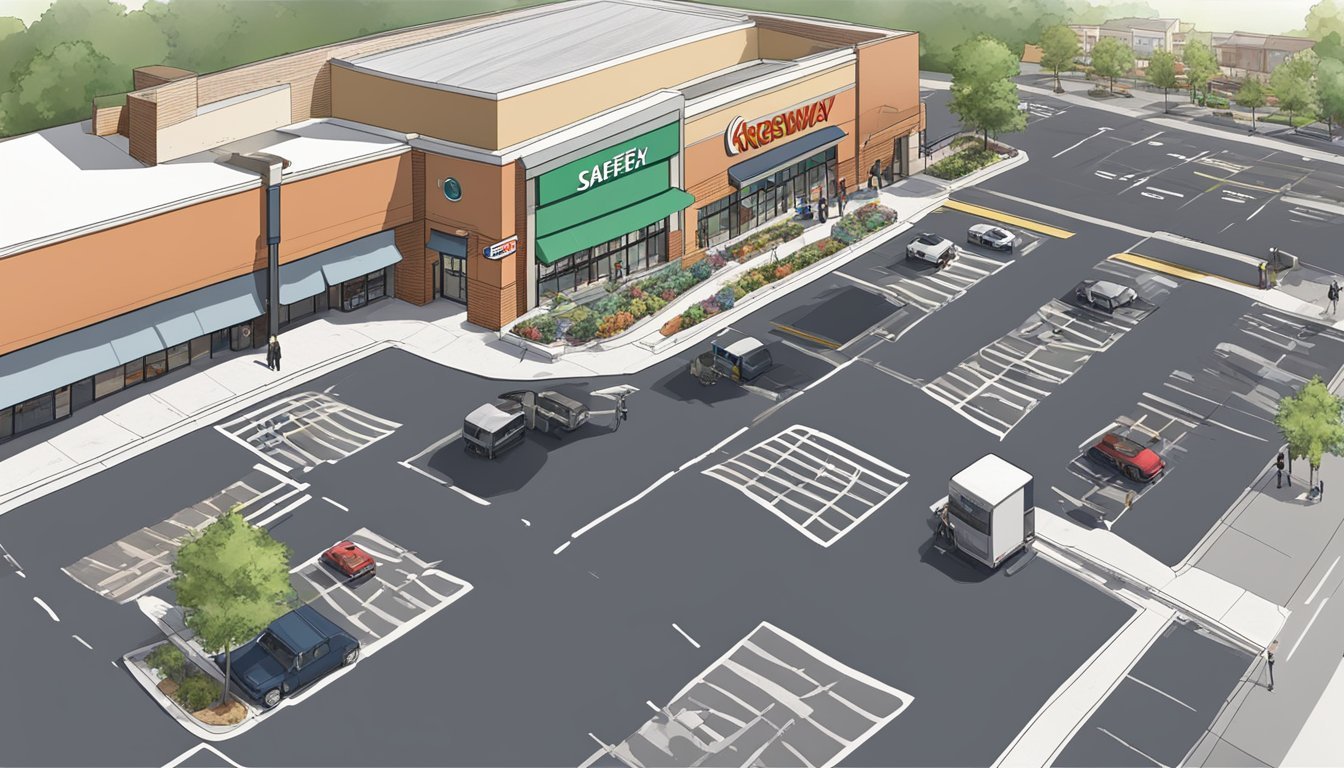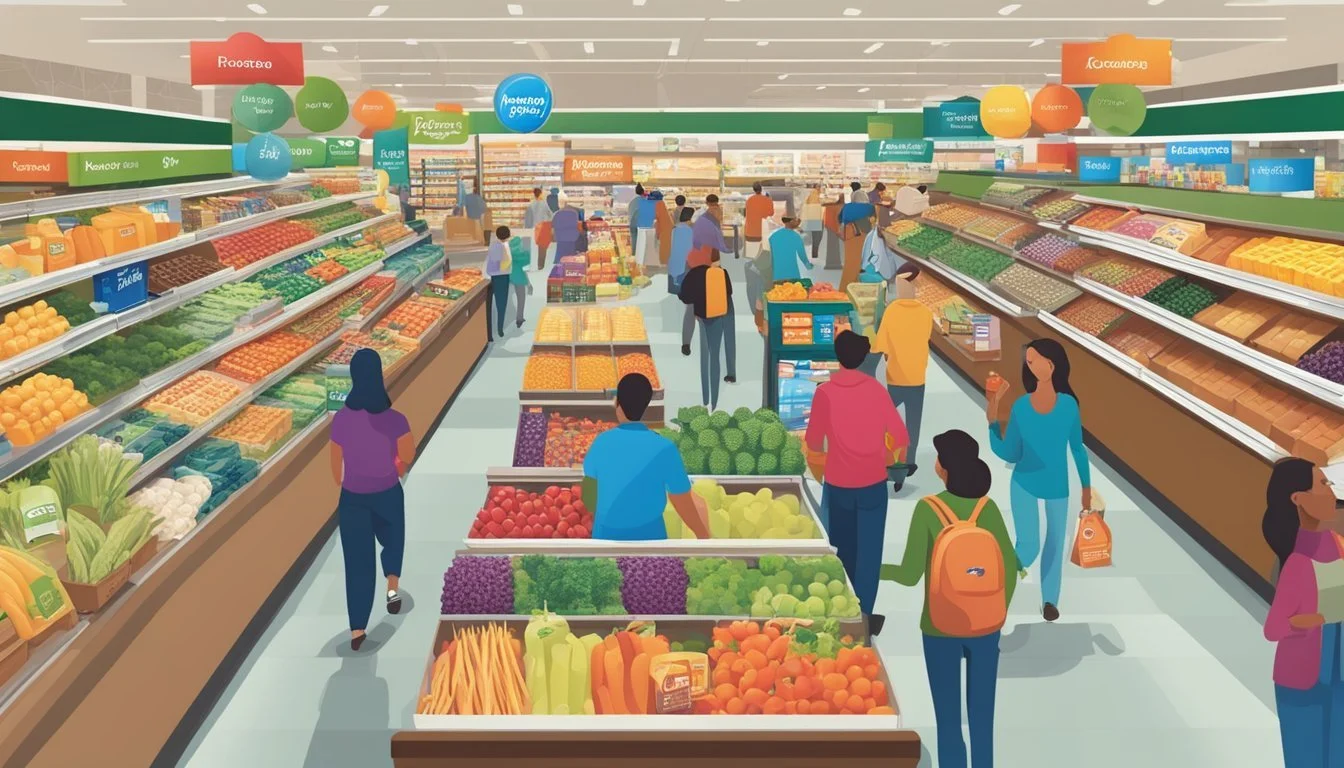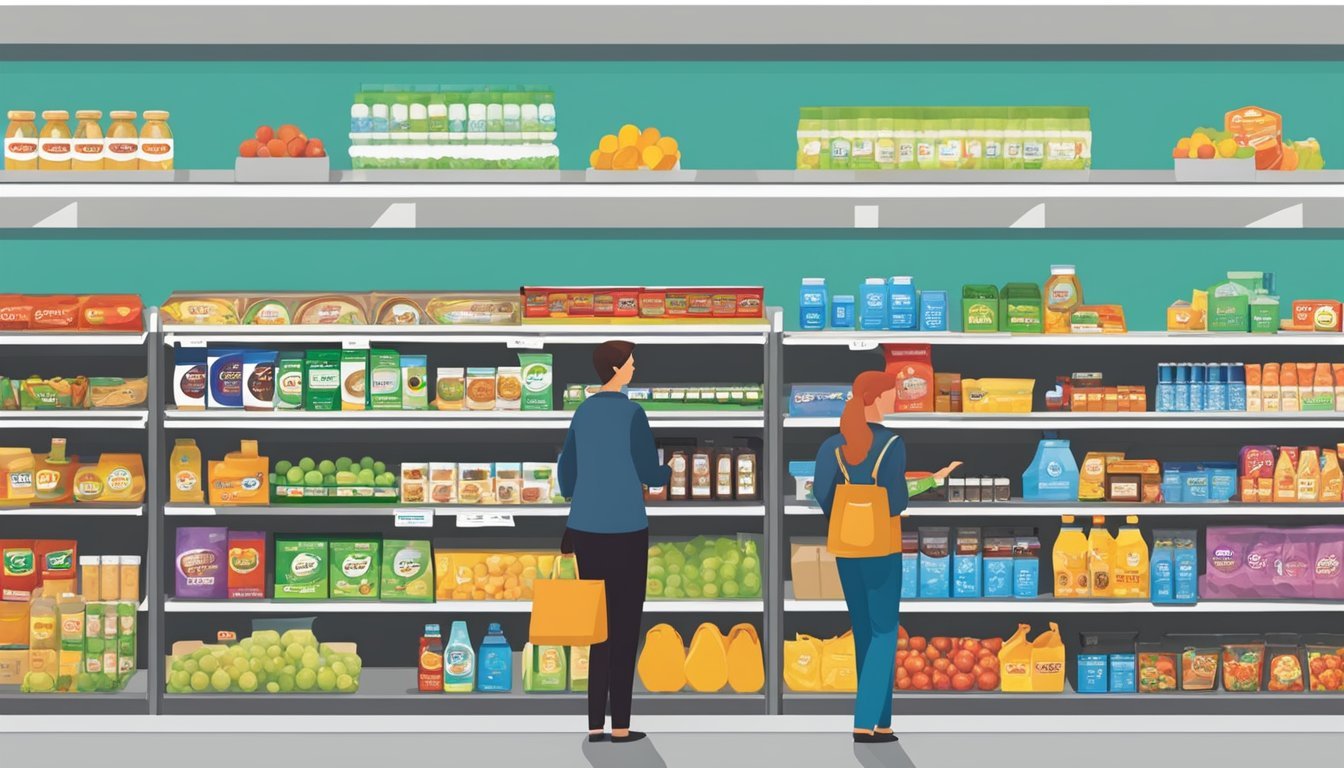Kroger vs Safeway
Comparing Quality, Prices, and Selection
When consumers are faced with choosing where to purchase their groceries, Kroger and Safeway stand out as two of the larger and more popular supermarket chains in the United States. Each store has its own loyal customer base and unique selling propositions, making the choice between them one that is often based on personal preference, specific deals, and overall shopping experience. Deciding which grocery store is better can be a matter of assessing various aspects such as product variety, pricing, quality of goods, and customer service.
Kroger, with a significant footprint, boasts a vast array of products and often features its own brand offerings, which can provide customers with a more cost-effective alternative to national brands. Safeway, on the other hand, brings competitive pricing on seafood, frequently offering better deals on items like raw shrimp and salmon (What wine goes well with salmon?) fillets. Each store's pricing strategy and product selection can greatly influence a consumer's decision-making process based on their individual household needs.
The quality of meat products, a crucial component of many shoppers' lists, also varies between these supermarkets. Safeway and Kroger both offer a range of meat options, with the latter not typically providing as many unique meat options as some competitors but still maintaining a robust selection of standard products. In a market where consumers are increasingly looking for both value and quality, the competition between Kroger and Safeway exemplifies the choices and considerations that shape everyday grocery shopping.
History and Evolution of Kroger and Safeway
The storied histories of Kroger and Safeway trace back over a century, showcasing their individual growth trajectories and milestones which have shaped the current grocery store landscape.
Kroger's Growth and Milestones
Kroger began in 1883 with a single store in Cincinnati opened by Barney Kroger with an initial investment of $372. Key milestones for Kroger include:
1930: Kroger becomes the first grocery chain with its own bakery, expanding consumer offerings.
1972: The company is among the first to test electronic scanners, leading innovations in the industry.
1998: Acquisition of Fred Meyer, which dramatically expands Kroger's store footprint.
2017: Emphasizing its commitment to retail technology, Kroger launches Restock Kroger, a transformational plan to redefine the grocery shopping experience.
Kroger operates supermarkets under multiple banners across the U.S., making it one of the largest grocery retailers.
Safeway's Expansion and Key Dates
Safeway, established in 1915, has marked itself as a major player in the grocery sector with continuous expansion and strategic decisions.
January 2015: Safeway becomes a subsidiary of Albertsons after acquisition by Cerberus Capital Management.
Notable Practices: Known for specialty departments within stores, such as bakery and pharmacy, and fare offerings including Starbucks and fuel centers.
Safeway operates numerous stores across the country, and its evolution has been characterized by adapting to consumer needs and market opportunities.
Store Locations and Accessibility
When considering which supermarket chain to shop at, the number of stores and their locations play a crucial role for consumers. Accessibility can greatly influence shopping habits, and below is a breakdown of how Kroger and Safeway compare in terms of their geographical presence.
Kroger's National Footprint
Kroger operates a vast network of supermarkets across the United States. With over 2,700 stores, Kroger maintains a significant presence, particularly in the Midwest and South. It is known for being the largest supermarket chain by revenue in the country, with a stronghold in states like Georgia, where there are 173 Kroger locations primarily concentrated around Atlanta. The brand has a national footprint that ensures most shoppers are within a reasonable distance of a Kroger store.
Safeway's Regional Presence
Safeway, on the other hand, has a more regional approach with its store locations. While not matching Kroger's expansive reach, Safeway is well-represented in specific areas of the United States, particularly in the Western and central parts of the country. Safeway's strategy allows it to focus on regional preferences and maintain a strong connection with local communities. The supermarket chain ensures that shoppers within these regions have convenient access to a Safeway store for their grocery needs.
Product Range and Quality
When comparing Kroger and Safeway, customers must consider the variation in product selection and the quality of goods offered by each grocery store chain, particularly in the realms of meat, produce, and specialty items.
Variety of Products
Both Kroger and Safeway offer an extensive range of products to cater to their customers' needs. Kroger stands out with its private label brands spanning multiple categories, providing shoppers with a bevy of choices. Safeway, on the other hand, is recognized for having a solid selection of products that often aligns closely with consumer demands and local preferences.
Quality of Produce and Meat
Quality is paramount when it comes to produce and meat. Kroger often carries a wide array of fresh produce, and their meat selection is notable, albeit there might be variance in unique offerings when compared to an expansive grocery store like Meijer. Safeway is competitive in this aspect, with their customers finding Salmon fillets and raw shrimp at better prices compared to Kroger, indicating not only cost efficiency but also the importance the chain places on the quality of its seafood.
Organic and Specialty Offerings
Organic and specialty products are increasingly crucial for health-conscious shoppers. Both Kroger and Safeway address this need with organic produce sections and various specialty items. Organic options are available across both stores, providing consumers with the choice to purchase products that are free from synthetic pesticides and fertilizers. Safeway's waterfrontBISTRO brand is an example of its commitment to specialty items, particularly in the seafood category.
Kroger has its Simple Truth line which encompasses organic and natural products, thus accommodating those looking for healthier, environmentally conscious options. Each has recognized the growing demand for organic and specialty products and has responded by expanding their range to meet consumer expectations for high-quality produce and groceries.
Pricing and Value for Money
When evaluating Kroger and Safeway, customers are generally concerned with obtaining the best value for their money. This analysis of pricing considers individual item costs, savings programs, and prices for organic and premium products.
Comparing Everyday Prices
Kroger:
Large raw shell-on shrimp (per pound): $15.98
Salmon fillets (per fillet): Price not specified, but noted as more expensive
Safeway:
Large raw shell-on shrimp (per pound): Roughly $15.09 (considering a 2-pound bag at $30.18)
Salmon fillets (per fillet): $1.00 less than Kroger
The data suggests that Safeway offers better deals on certain seafood items like raw shrimp and salmon fillets on a per-pound basis. The price comparisons for everyday items indicate that Safeway can be the preferred choice for seafood based on price alone.
Savings and Discount Programs
While specific savings and discount programs for Kroger and Safeway are not detailed in the provided results, grocery stores often have loyalty programs and weekly specials that could significantly impact the overall savings for shoppers. Customers should consider enrolling in these programs to take advantage of exclusive deals and discounts that can contribute to overall savings.
Cost of Organic and Premium Items
The search results do not provide a direct comparison of the costs of organic and premium items at Kroger and Safeway. However, customers looking for organic and specialty goods should take the time to look at the pricing of these items at both stores. Generally, such items tend to be more expensive than non-organic goods, but prices can vary widely depending on the store and current promotions. Shoppers should watch for organic labels and compare prices, keeping in mind that sales and store brands may offer cost savings.
Customer Service and Shopping Experience
When choosing between Kroger and Safeway, customers often consider the quality of customer service and the overall shopping experience crucial. These factors can significantly affect the speed and satisfaction of the shopping trip for individuals and families.
Staff Helpfulness and Checkout Efficiency
Kroger is known for its attentive customer service, with staff readiness to assist shoppers through the aisles. Feedback indicates that employees are generally knowledgeable regarding store products and promotions, this can be especially valuable for customers requiring assistance or seeking recommendations. Checkout efficiency at Kroger tends to be above average, with a strategic number of open registers to keep lines moving swiftly.
In contrast, Safeway has also been cited for efficient checkouts with a specific nod towards its in-store experience. Safeway ensures checkout efficiency with well-trained staff, making the process smooth and quick for customers, leading to an overall positive impression of the service.
Store Cleanliness and Layout
Store cleanliness plays a pivotal role in shaping the shopping experience. Customers find Kroger stores to be well-maintained; the layout is generally designed to make the shopping trip convenient. The aisles are clearly labeled, and there is an evident focus on presenting a neat and orderly shopping environment.
Similarly, Safeway's store layout and cleanliness are often commended by customers. The stores are typically kept clean, with products organically positioned to create a family-friendly shopping atmosphere. It's noted that the cleanliness extends to vital areas such as the produce section and restrooms.
Rewards Programs and Promotions
When comparing Kroger and Safeway, their rewards programs and promotions emerge as a significant factor in customer loyalty and savings. Each grocery store has tailored their offerings to incentivize shoppers through unique loyalty benefits and periodic promotional deals.
Loyalty Benefits
Kroger: Kroger’s primary loyalty program, Kroger Plus, offers a range of benefits including:
Fuel Points: Customers earn 1 fuel point for every $1 spent. These points can be redeemed for discounts on fuel, with 100 points equating to $0.10 off per gallon.
Exclusive Discounts: Membership grants access to member-only prices on a selection of goods.
Boost Program: For an annual fee, customers can upgrade to Kroger Boost, which includes additional benefits like free delivery and double fuel points for every dollar spent on gift cards and no/low-cost prescriptions.
Safeway: Safeway’s comparable program, often branded under different names such as Randalls for U, includes:
Personalized Deals: Members receive offers tailored to their shopping habits.
Reward Points: Shoppers accumulate points that can be exchanged for grocery discounts or gas rewards.
Seasonal and Promotional Deals
Kroger: Kroger strategically uses seasonal promotions and loss leaders, especially during key holidays like Valentine's Day. Customers can expect:
Seasonal Discounts: Special pricing on seasonal items and holiday essentials.
Prime Discounts: Occasionally, there are prime discounts on on-sale items, including buy-one-get-one-free deals or steep discounts on clearance items.
Safeway: Safeway also capitalizes on seasonal trends and offers various promotions throughout the year:
Holiday Specials: Competitive pricing on Valentine’s Day chocolates, flowers, and gifts.
Weekly Deals: Regular flyers advertise on-sale items, which are often used as loss leaders to draw in customers.
Consumer Perception and Brand Reputation
In evaluating Kroger and Safeway, consumer perception and brand reputation emerge as pivotal factors that heavily influence shopping preferences and loyalty.
Reviews and Ratings Analysis
Analyzing customer reviews and ratings offers a quantitative glimpse into how Kroger and Safeway are perceived by shoppers. For instance, Brandspark's survey places Kroger ahead in trustworthiness, a sentiment echoed by strong customer reviews across various platforms. Safeway's loyalty program also garners praise, suggesting that regular customers value their rewards system.
Research Findings on Shopping Preferences
Recent research points to specific consumer preferences that underpin the reputation of both Kroger and Safeway. Kroger is frequently mentioned for its scale and digital sales growth, which reflects a positive reception to their e-commerce services. In contrast, Safeway is recognized for its loyalty program's integration of digital and in-store shopping experiences. These components contribute to overall consumer satisfaction and are a testament to each company's adaptation to modern retail demands.
Convenience and Additional Services
Kroger and Safeway both provide an array of services to enhance the shopping experience, focusing on convenience and variety.
Grocery Delivery Options
Kroger offers a comprehensive grocery delivery service that can lead to significant yearly savings for customers, especially with its Kroger Plus membership program. Kroger's platform is highly integrated with their rewards system, which can offer free delivery for certain promotions and to exclusive members. Safeway, while it also offers a delivery service, tends to have a less prominent rewards program when it comes to delivery options.
Prepared Foods and In-Store Services
Safeway is known for its high-quality prepared foods section, with a particular emphasis on bakery items. Customers often praise Safeway for its bakery excellence, suggesting a greater variety of fresh baked goods compared to Kroger. However, Kroger's in-store services are varied and may include a larger selection of generic staples in the prepared foods department, catering to customers looking for convenient meal solutions beyond the bakery aisle.
Conclusion
When families are deciding which grocery store to patronize, it is important to consider various factors, including price, selection, and convenience. Kroger and Safeway are two of the leading supermarkets where many customers routinely shop.
In terms of pricing, Kroger appears to have a competitive edge with a more distinct pricing structure, which includes options for online ordering — $4.95 for one-time orders, $16.95 monthly, and $99.95 for unlimited online ordering. For those families who prioritize digital convenience and shopping via online platforms, Kroger provides clear advantages.
Safeway, however, is not to be outdone when it comes to seafood pricing. It offers lower prices per pound for products like raw shrimp and salmon fillets, making it a potentially better option for seafood lovers.
The revenue figures reflect Kroger’s larger size and wider reach, boasting $98.4 billion in sales compared to Safeway's $36.1 billion. This might translate to a more extensive selection in Kroger stores compared to Safeway, although this can vary by location.
Ultimately, the decision rests on individual needs and preferences. For online services and overall selection, one might lean towards Kroger; however, for specific deals on seafood, Safeway could be more appealing.
Perks Kroger Safeway Pricing Competitive structure for online orders Cheaper seafood options Selection Possibly more extensive Varies by location Convenience Strong online presence - Special Offers - Deals on specific items like seafood








